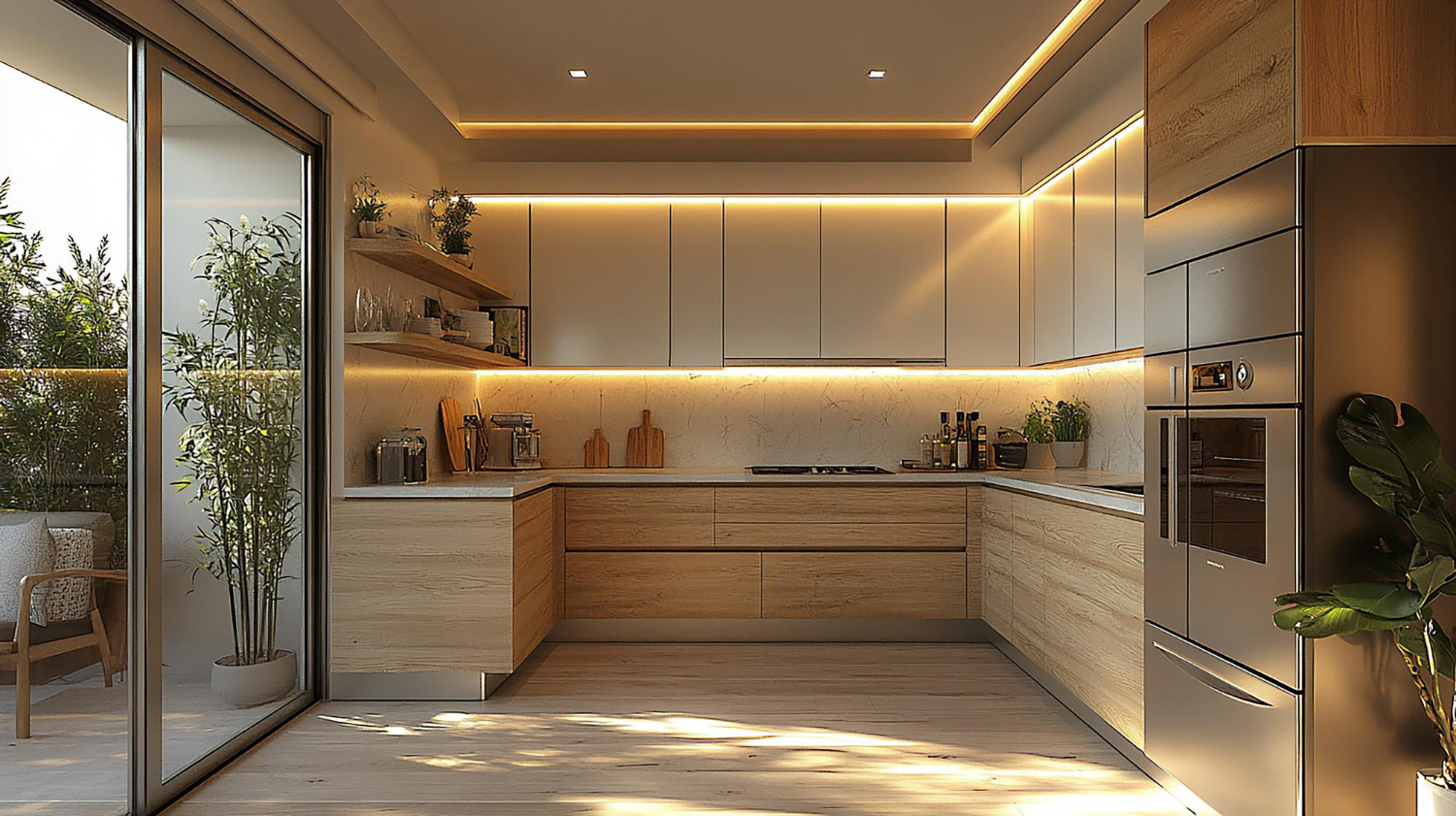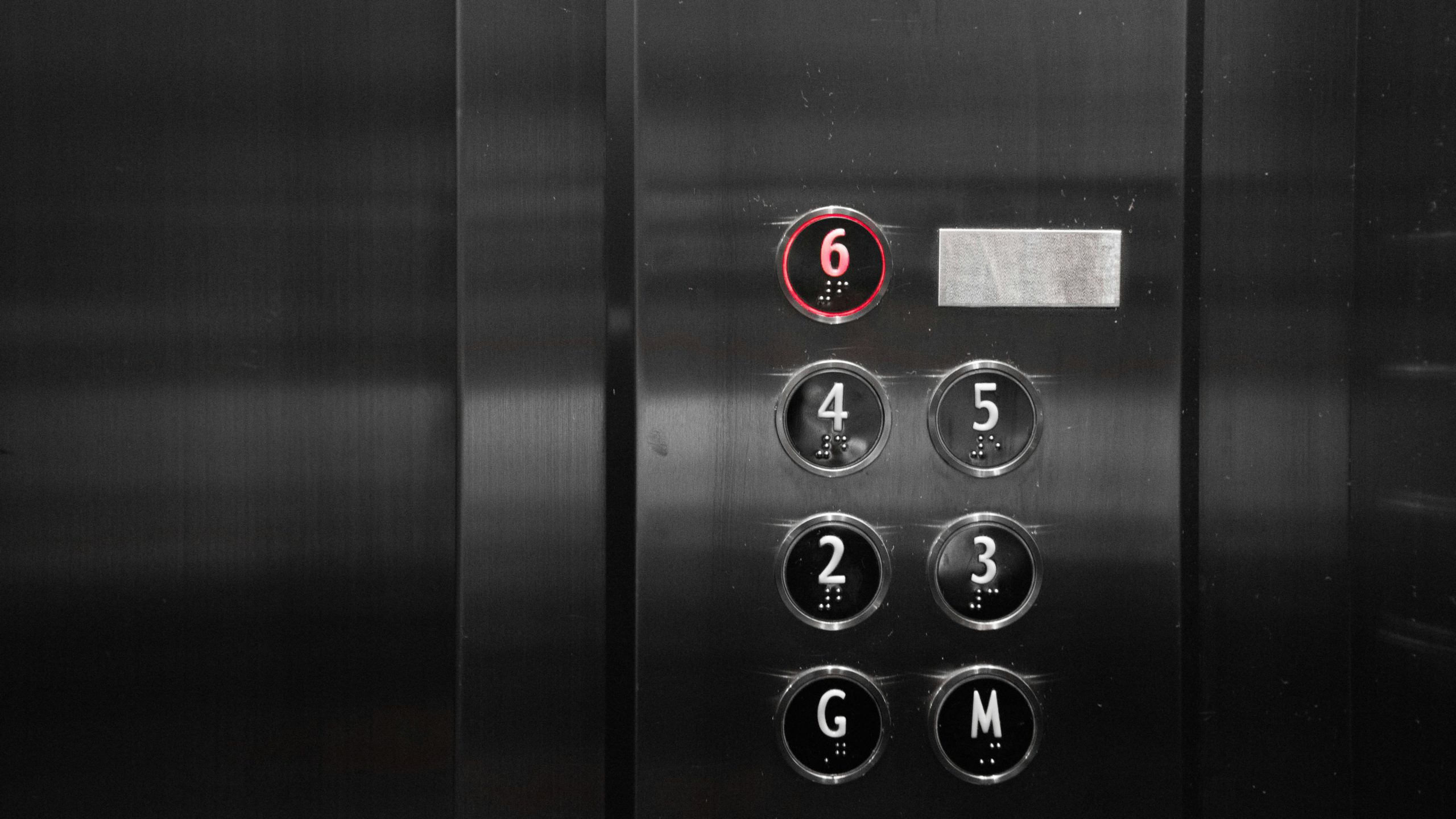Kitchen Lighting Styles: From Classic to Modern
Introduction
The different types of kitchen lighting today are no longer just a single bulb in the ceiling, but a complete system that controls the mood, comfort, and functions of the space. The kitchen has become a place for cooking, family gatherings, work, and even hosting guests. That’s why choosing the best lighting for the kitchen means combining aesthetics with practicality. In this guide, we’ll go through ceiling kitchen lighting, under-cabinet lighting, hidden lighting, directional lighting, decorative lighting, and how to combine natural and artificial light, along with practical ideas that suit Saudi kitchens of different sizes and design styles.
Kitchen Ceiling Lighting
Kitchen ceiling lighting is the primary layer in any successful design, as it is responsible for distributing general light throughout the entire space. Through this layer, you can control how bright the kitchen is, reduce shadows, and make movement inside it safe and comfortable.
- Make sure the kitchen ceiling lighting is evenly distributed, without leaving dark corners or concentrating all the light in a single point.
- In small kitchens, one strong LED panel in the ceiling can be enough, with simple support from cabinet lighting or under-cabinet lighting.
- In larger kitchens, it is preferable to distribute recessed spotlights in the ceiling along with chandeliers or pendant lighting above the island or breakfast table.
If you want a deeper understanding of the relationship between natural and artificial lighting, and how that affects the strength and comfort of the lighting in your kitchen, you can check out this article on Aqar Blog:
Natural Lighting vs. Artificial Lighting: Which Should You Choose?
Types of Ceiling Lighting: From Pendant Lights to Chandeliers
Within the different types of kitchen lighting, ceiling solutions range from simple to luxurious:
- Pendant lighting above the island or dining table
It adds a beautiful focal point, especially in open kitchens. You can choose modern metal or clear glass shapes that match the cabinet lines. - Classic or modern chandeliers
More suitable for large kitchens or those that include an internal dining table. They add a touch of luxury, but they should not obstruct movement or block the view. - Recessed spotlights in gypsum
They provide uniform general lighting and can be distributed according to a planned layout to enhance the best lighting for the kitchen. - Track lights
Flexible; they allow you to direct the light toward the sink, cooking area, or island as needed.
Choosing the right type of ceiling lighting depends on the kitchen’s size, ceiling height, and décor style (classic, neo-classic, or modern).
Under-Cabinet Kitchen Lighting
Under-cabinet kitchen lighting (upper cabinets) is one of the most important functional elements, as it directs light straight onto the worktop where cutting and preparation take place.
- LED strips under the cabinets prevent the shadows created when you stand between the ceiling and the countertop.
- This lighting can run continuously along the cabinet to form an elegant light line that enhances modern kitchen lighting styles.
- Having a dimmer switch makes under-cabinet lighting practical during the day and soft at night.
You can also repeat the idea with lower cabinet lighting in the form of a soft light line near the floor, creating comfortable and practical night lighting for movement without turning on the full ceiling kitchen lighting.
Hidden Lighting
Hidden lighting has become a prominent feature in modern kitchens because it gives a clean look free of cluttered visual elements.
- Hidden lighting can be installed inside ceiling gypsum recesses, or behind cornices above the cabinets.
- Hidden kitchen lighting adds a sense of depth and spaciousness, especially when it gently reflects on the walls or ceiling.
- Many people combine hidden kitchen lighting with ceiling spotlights; the hidden lights act as a soft background, while the spotlights serve as a direct light source.
Hidden lighting falls under the different types of kitchen lighting that elevate the “mood” of the space and make it suitable for sitting and entertaining, not just cooking.
Directional Lighting
Directional lighting is the type of lighting that can be aimed and moved, such as track light heads or adjustable spotlights.
- It’s useful for highlighting a specific corner such as the sink, coffee nook, or appliance corner.
- It helps you showcase standout design elements within the various kitchen lighting styles, like a stone wall or special ceramic tiles.
- In open kitchens, directional lighting can be used to visually separate the kitchen area from the seating area without needing a wall.
When laying out directional lighting, make sure it is independent from cabinet lighting and ceiling lighting, so you can control each layer separately according to the activity in the space.
Decorative Lighting
Decorative lighting may not be the strongest in terms of intensity, but it adds character and soul to the space, and completes the idea of the best kitchen lighting in a holistic way.
Some examples:
- Small spotlights inside glass cabinets to display plates or cups.
- LED strips behind open shelves to outline the shelf shape and highlight accessories.
- Small pendant lights above the coffee corner or a side nook.
Internal cabinet lighting is also considered decorative lighting, especially when the cabinets are glass; it combines functionality with the beauty of modern kitchen lighting styles.
Combining Natural and Artificial Lighting
We can’t talk about the best lighting for the kitchen without thinking about natural light. The window, clerestory, or glass door are all elements that determine how much artificial lighting you need.
- In kitchens that receive strong natural light, you can rely on general ceiling kitchen lighting along with cabinet lighting just to cover nighttime hours.
- In kitchens with small windows or shaded orientations, more layers are needed: under-cabinet lighting, hidden lighting, and directional lighting.
- Aiming light fixtures away from the glass directly reduces glare and makes the different kitchen lighting styles more comfortable for the eyes.
You can benefit more from combining natural and artificial light by reading Aqar Blog’s article on this topic (mentioned in the ceiling lighting section), especially if you’re in the stage of designing windows or redistributing the kitchen layout.
Ideas for Coordinating Lighting with Kitchen Décor
Coordinating the different types of kitchen lighting with the décor is no less important than choosing the materials and colors themselves:
- In classic or neo-classic kitchens, chandeliers with golden or bronze details and warm hidden lighting may suit you.
- In modern kitchens with clean lines, the options tend to be simple ceiling lighting, black or metallic track lights, and neutral white hidden lighting.
- Color temperatures (Kelvin) should harmonize with wood or marble tones; warm tones suit wood more, while neutral tones suit white and grey.
For more inspiration on coordinating lighting with décor details and the dining table, you can read:
Dining Table Lighting: A Complete Guide for Work and Hosting
These ideas help you connect different kitchen lighting styles with the rest of your home’s spaces, especially in kitchens that open onto the living room or dining area.
Common Mistakes to Avoid When Choosing Kitchen Lighting
Even if you choose the most beautiful types of kitchen lighting, there are common mistakes that can ruin the result:
- Relying on a single ceiling point only
This leads to annoying shadows and poor visibility, even if the bulb is strong. - Not separating lighting layers
Combining ceiling kitchen lighting with cabinet lighting on one switch reduces flexibility of control. - Neglecting under-cabinet lighting
This makes the work area dark no matter how strong the overhead lighting is. - Choosing a light color that doesn’t match the décor
Very cool white with warm wood, or the opposite, can create an uncomfortable feeling. - Installing hidden lighting without planning
If hidden lighting is too strong or poorly aimed, it may cause annoying glare instead of the calm atmosphere you want. - Ignoring product quality
Using cheap strips reduces the lifespan of cabinet lighting and makes the color appear unstable.
Avoiding these mistakes makes your design as close as possible to the best lighting for the kitchen that suits your daily use.
Conclusion
The different types of kitchen lighting are not a secondary element in design; they are an essential part of your family’s comfort, your kitchen’s safety, and your home’s beauty. From general ceiling kitchen lighting to hidden kitchen lighting, and from practical cabinet lighting to soft decorative lighting, you can create different scenarios that suit cooking, family time, and hosting. If you’d like to dive deeper into the world of interior design and practical ideas for kitchens, rooms, and décor, you’ll find in Aqar Blog a constantly updated library of articles, photos, and tips that help you make smarter decisions for your home.
Visit: https://sa.aqar.fm/blog/ and discover more ideas that will help you choose the best lighting for the kitchen and the rest of your home’s spaces with confidence and clarity.
Frequently Asked Questions
What are the most important lighting layers that should be available in the kitchen?
It is preferable to have general ceiling kitchen lighting, under-cabinet lighting for preparation tasks, in addition to hidden lighting or decorative lighting to add a cozy, modern atmosphere. Combining these layers is the secret to achieving the best lighting for the kitchen.
It’s not recommended; hidden lighting is excellent for ambiance and décor, but it’s not enough on its own as task lighting. It must be supported by direct light from ceiling kitchen lighting and/or cabinet lighting.
What is the difference between cabinet lighting and cupboard lighting in the kitchen?
The terms are often used to describe the same idea, but cabinet lighting may refer to internal lighting (inside glass cabinets), while cupboard lighting is often used to describe under-cabinet lighting for upper units or low-level lighting for base units near the floor.
Which is better: pendant lights or ceiling spotlights?
It depends on your design; spotlights are better for evenly distributing light, while pendant lights and chandeliers add a decorative touch above the island or dining table. Within modern kitchen lighting styles, the two are often combined.
How do I choose the right light color for the kitchen?
It’s best to choose warm to neutral white (around 3000–4000 Kelvin) so it’s comfortable for the eyes and highlights the colors of food and wood. This range suits most kitchen lighting styles, whether classic or modern.
Do I need dimmer switches in the kitchen?
Yes, dimmers give you the ability to increase or decrease brightness according to time and activity. They are especially useful with hidden lighting and cupboard lighting, as they quickly shift the mood from functional to cozy.
How can I benefit from natural light along with artificial lighting?
Arrange your fixtures to complement, not compete with, natural light. Use artificial lighting in the evening and in shaded areas, and take advantage of windows as much as possible during the day, distributing the different kitchen lighting styles so they don’t cause glare on the glass.
Are modern kitchen lighting styles suitable for small kitchens?
Yes, absolutely; using hidden kitchen lighting with simple spotlights and subtle under-cabinet strips makes a small kitchen look more spacious and organized, while reducing visually intrusive elements on the ceiling.








